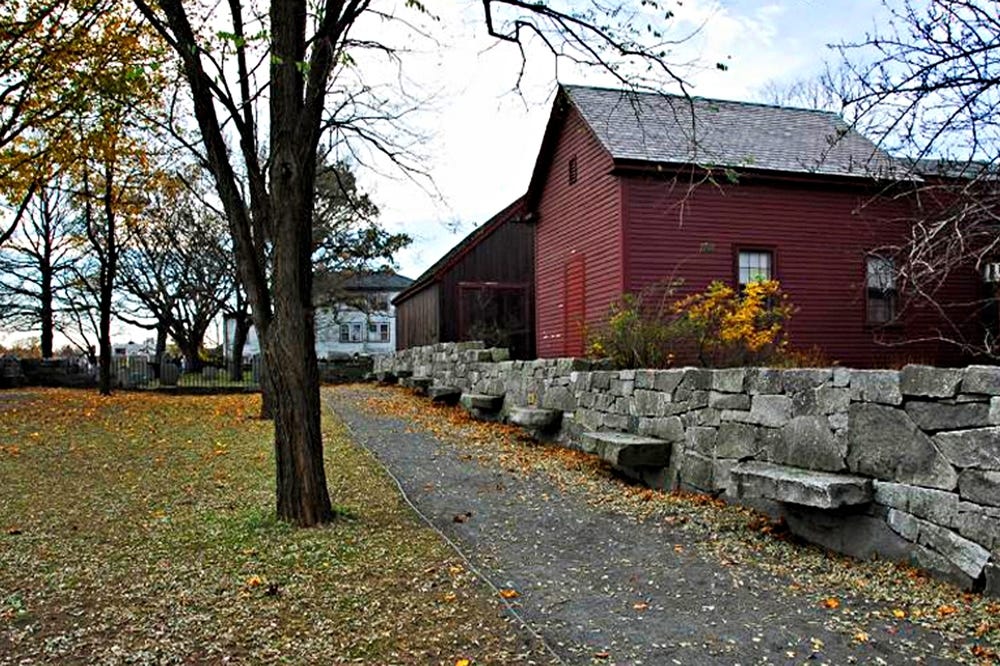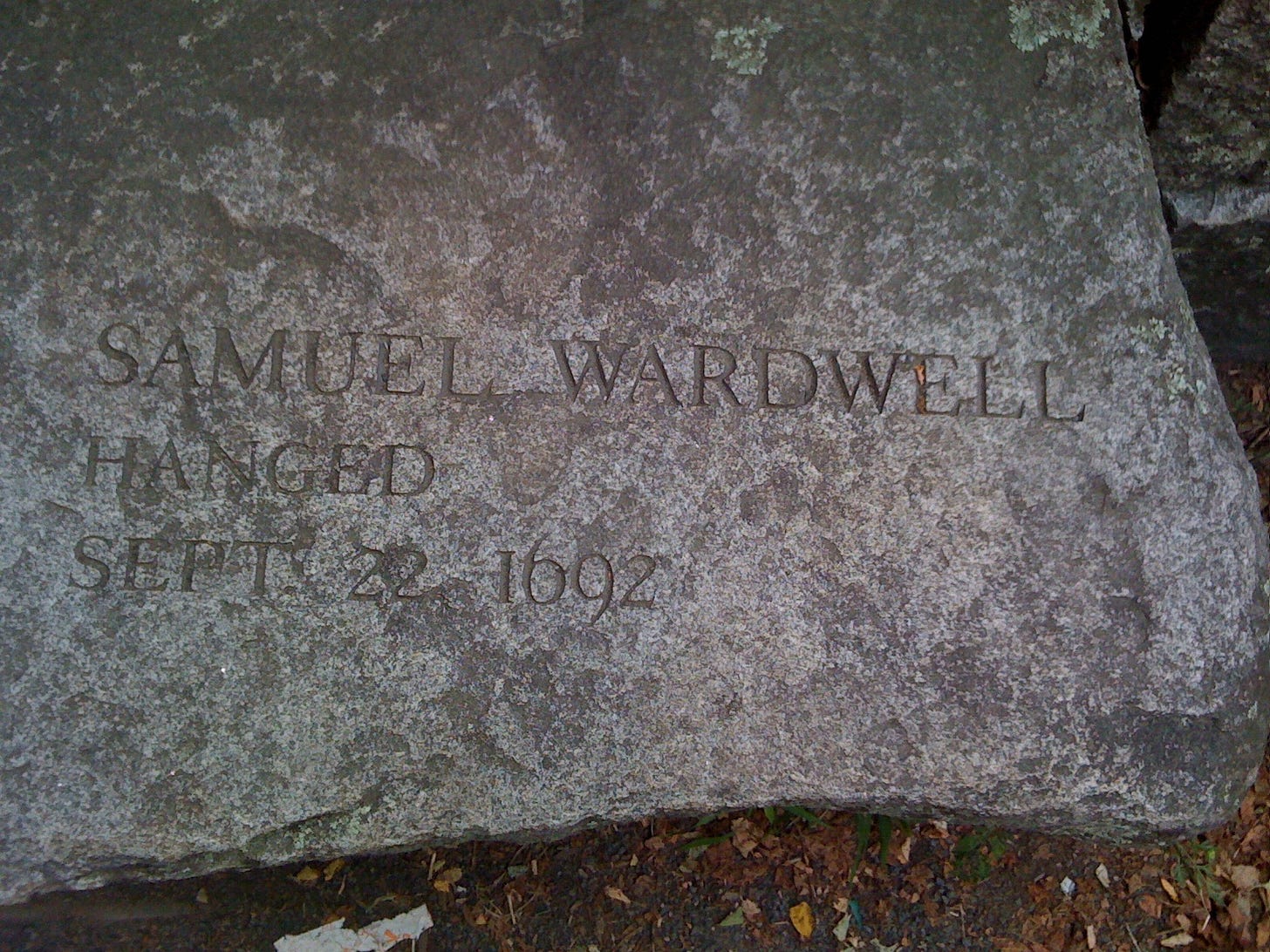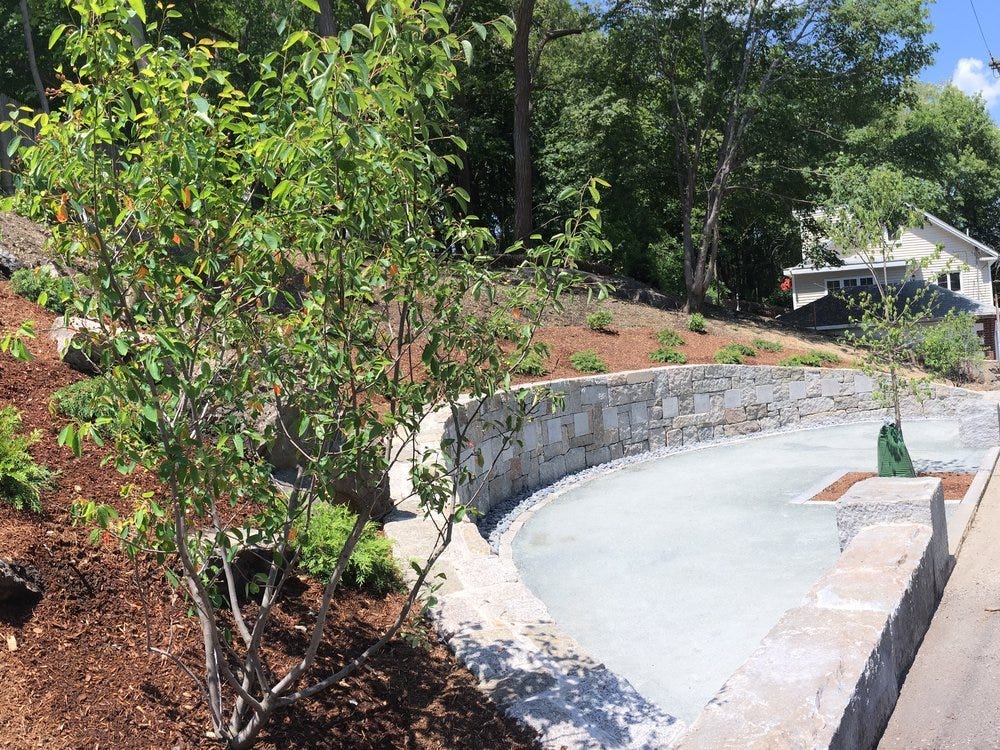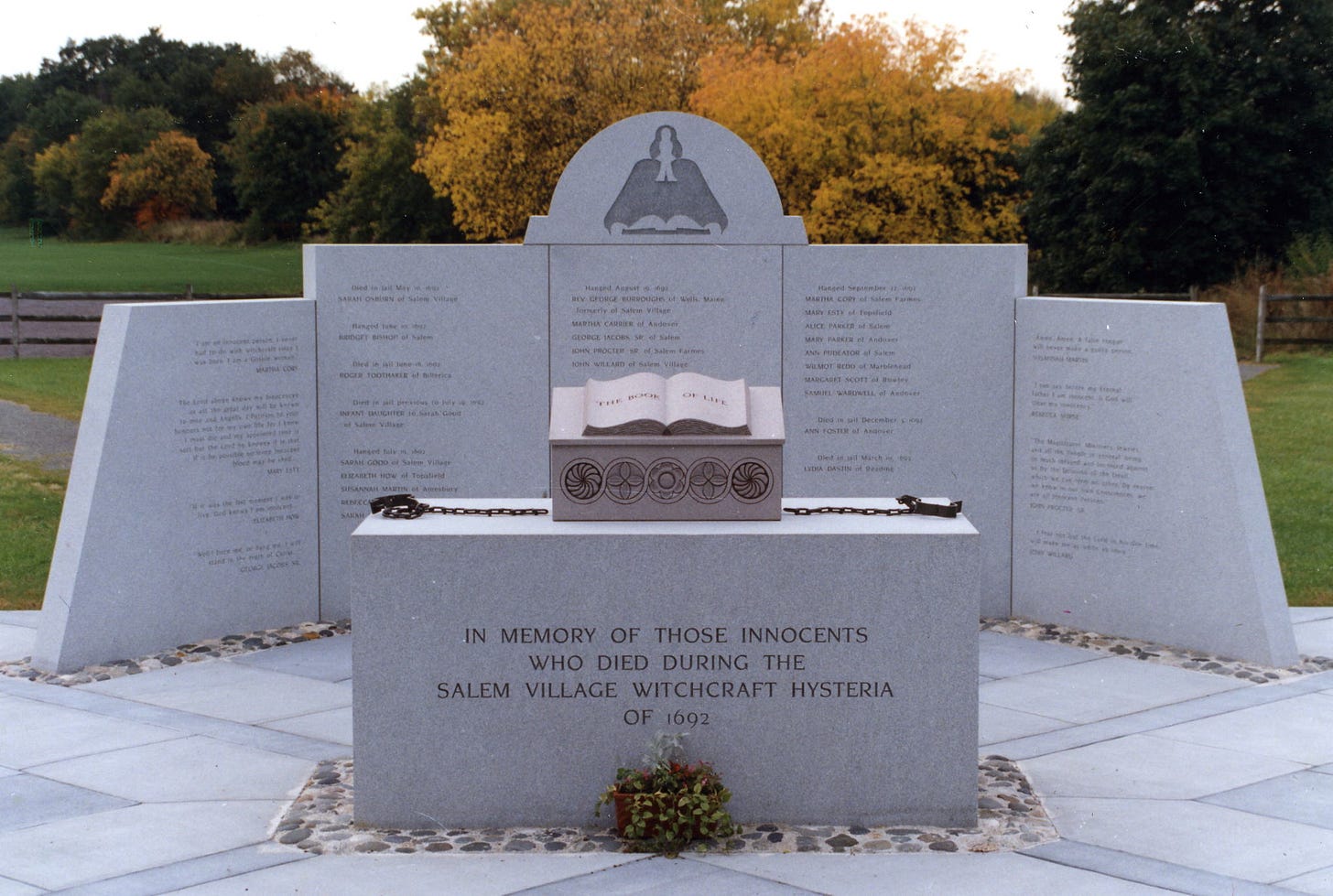Andover Bewitched: Commemorating the Trials
Here are three memorials to the victims of the witch trials that you can visit today.
How do we remember difficult times? What monuments can we make to remember those lost during the witch trials? In today’s entry of “Andover Bewitched,” I will tell you about three monuments in Salem and Danvers, Massachusetts which memorialize the trials. You can visit these sites today — find addresses and information about visiting below!
Each of these memorials name the people from Andover who were executed during the trials: Samuel Wardwell, Martha Carrier, and Mary Parker, among the other victims of the trials. While Martha and Samuel lived in present-day Andover, Mary Parker lived in present-day North Andover. Ann Foster, also of Andover, died while in prison in December 1692.
The Salem Witch Trials Memorial
24 Liberty St, Salem, MA 01970
In 1992, on the 300th anniversary of the trials, the city of Salem moved to create a memorial dedicated to the twenty people executed, including the 19 people hanged, and Giles Corey, who was pressed to death.
When you enter the memorial, you will see twenty stone benches, each inscribed with a name and execution date. Visitors often leave flowers and small notes on these benches. Inscribed around the memorial are phrases drawn from the court documents detailing what the accused said to defend themselves.1
We do not know where many of those who were condemned to die for the crime of witchcraft were buried. Those accused were believed to be acting against God, so they were not offered proper burials. Instead, families had to sneak out in the middle of the night to bury their loved ones in secret. Because of this, the memorial serves as a marker for those graves we may never find.
The Salem Witch Trials Tercentenary Committee began searching for a team to create the memorial in 1986. After a large international design competition, James Cutler and Maggie Smith’s design won out. The memorial was dedicated in August 1992 by Nobel Laureate Elie Wiesel.2
Today, you can visit this memorial and the Old Burying Point in Downtown Salem.3
The Memorial at Proctor’s Ledge
Since we do not know where many of those executed were buried, there are a few questions that remain, especially: Where were people who were condemned to die for witchcraft actually executed?
The answer to this question was debated for over three centuries as historians tried to uncover the precise location. For years, it was known that the hangings occurred on the aptly named “Gallows Hill,” but no one knew specifically where they occurred. Many people assumed it happened at the top of the hill – after all, this was a logical conclusion.
But, as early as 1921, historians began to believe otherwise. Sidney Perley wrote an article, “Where the Salem ‘Witches’ Were Hanged” correcting local newspapers with his research.4 Perley compared land records and first person accounts, and traveled to Gallows Hill to uncover the true location.

Finally, in 2016, the “Gallows Hill Project,” along with new research by Marilynne Roach, Emerson Baker, and others, affirmed what Perley proposed. Rather than the top of the hill, the actual site was located at the bottom, at a site called Proctor’s Ledge.5 The land was named ‘Proctor’s Ledge’ after the trials were concluded, when it was purchased by John Proctor’s grandson.
Accounts of the trials indicate that those executed were left behind at Proctor’s Ledge. In the dead of night, their families came to the area to retrieve their bodies and give them a proper burial. Of course, this has made it far more difficult to trace where those executed were ever actually buried, but knowing the site that they died offers us an opportunity to mourn and commemorate their lives.
The Proctor’s Ledge Memorial was dedicated in 2017 on the 325th anniversary of the witch trials. The memorial was designed by Martha Lyon, a landscape architect, and funded by a Community Preservation Act grant.6
Today, you can visit the Proctor’s Ledge Memorial to reflect on the site and the nineteen people who were hanged for crimes they did not commit. The nameplates here are inscribed with those who died during the trials by hanging, excluding Giles Corey and those who died in prison.7
The Witchcraft Victims’ Memorial
176 Hobart St., Danvers, MA, 01923
Danvers, then known as Salem Village, was where the first rumors of witchcraft started, and where the first people were accused.8 As more and more people were accused of practicing witchcraft, the Massachusetts government created a new court in Salem – this is when everything moved from then-Salem Village to the Salem we know today. Salem has retained its reputation as a “Witch City,” while many people do not know that it all began in what is now called Danvers.
In 1992, to acknowledge the town’s involvement, Danvers dedicated its own memorial to those who died during the trials.9
This memorial, unlike the others listed here, not only names those victims who were executed, but also those who died in jail. This means that this is the only memorial which commemorates Andover’s Ann Foster, who died while imprisoned for the crime of witchcraft, which she did not commit.
The memorial is made of granite, including a large stone “bible box” and a pair of large-scale iron shackles. The bible box references a specialized container that would have been made of wood and was used to store important books or papers.10
Behind the box, a large wall bears the names of the 25 people who died during the trials and quotes from those who stood trial in 1692.11
Across all of these monuments, it’s clear that we’re still grappling with how we should remember this dark moment in history. We are discovering new information about the trials every year — as recently as 2017! Each of these memorials encourage us to remember the trials and ask how we can prevent anything like this from happening in the future.
In the next entry of “Andover Bewitched,” I’ll share a few more relevant sites that you can visit to learn more about the witch trials. I’m always curious to hear from you! Have you visited any of these memorials? Do you know of any others?
Click here to open a free Substack account, so you can like, share, and comment.
—Toni
Sidney Perley, “Where the Salem ‘Witches’ Were Hanged,” Historical Collections of the Essex Institute (January 1921).










I have been to the witch trials memorial.
Thank you, Toni, for so eloquently writing about these memorials and sharing their locations.